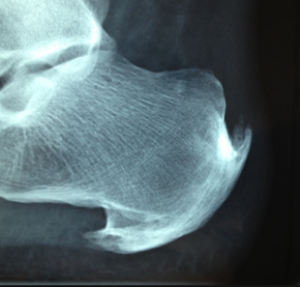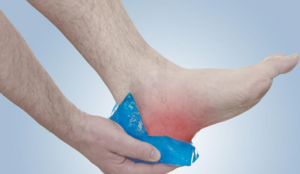Heel spur syndrome
Heel spur syndrome
Heel spurs are abnormal growths that develop at the back or under the heel causing inflammation and pain.
Heel spurs develop and sometimes associated with plantar fasciitis and usually chronic plantar fasciosis. It is important to be aware that heels spurs may or may not cause symptoms in patients. Pain may be worse when standing for long periods of time, worse in the morning or during particular physical activities such as walking and running.
Treatment
Digital imaging particularly X-rays may be prescribed by the podiatrist for further diagnosis of the heel spur. In many cases non-surgical treatment commonly relieves pain. At Sydney Foot Clinic the treatment options offered include;
- Rest, ice, Non-Steroidal Anti-Inflammatory Drug therapy (NSAIDs) and compression bandage to help relieve symptoms
- Footwear advice and cushioning.
- Custom made prescription orthotic therapy that provides cushioning and support and address any biomechanical abnormalities.
- Dry needling
- Prolotherapy injection therapy
- Exercise program – exercises, stretching and rehabilitation may be prescribed to help improve range of motion and stabilise the foot and ankle.
Sometimes surgery may be required particularly for those patients with chronic heel pain. Surgery may involve release of the plantar fascia or removing the bony heel spur.
Your content goes here. Edit or remove this text inline or in the module Content settings. You can also style every aspect of this content in the module Design settings and even apply custom CSS to this text in the module Advanced settings.


